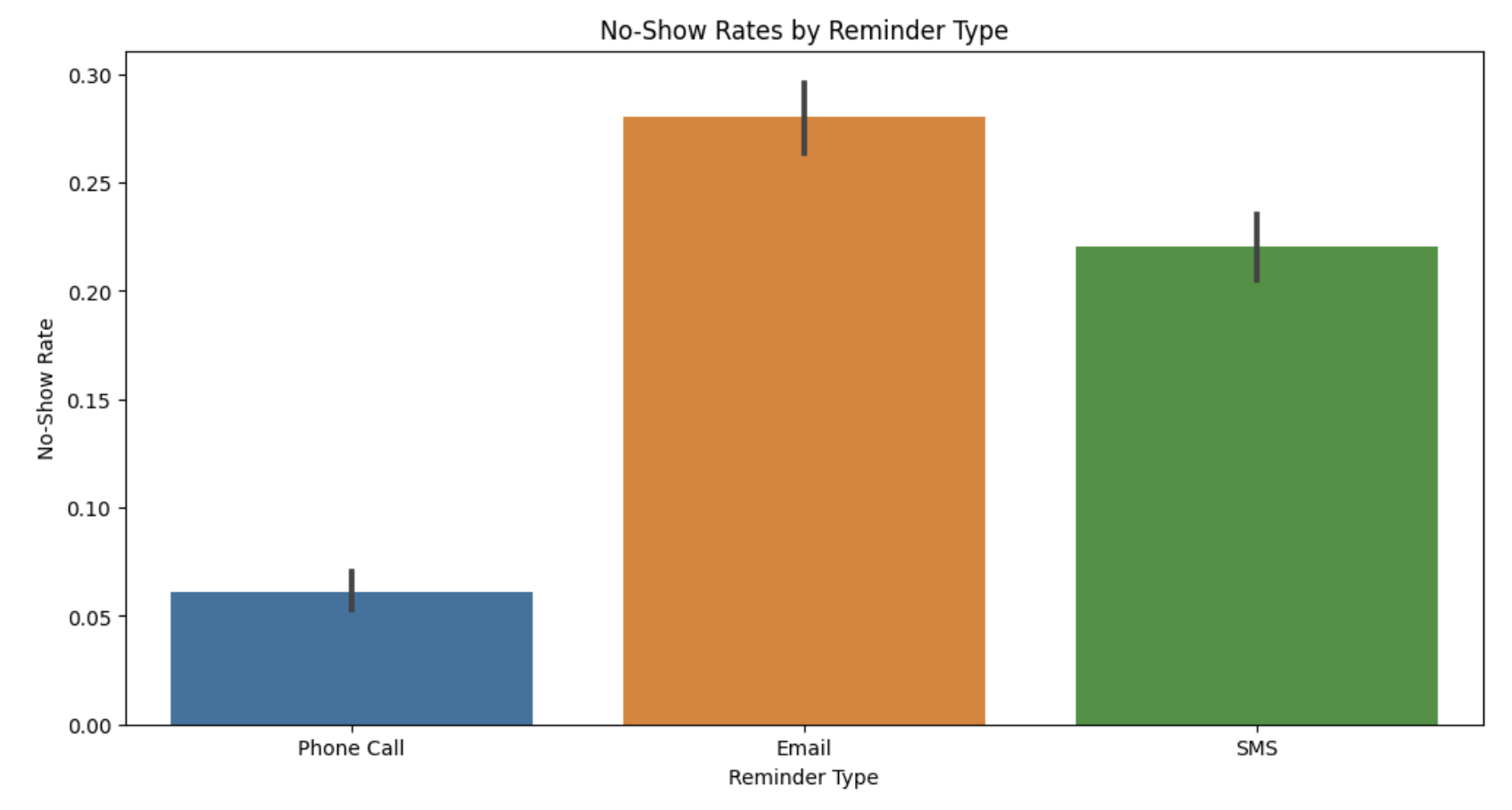Unlocking the Door: Insights from Our No-Show Experiment

A good experiment doesn’t just answer questions—it reveals actionable insights. In our last post, we discussed how we designed and conducted an A/B test to determine whether different reminder types could reduce patient no-show rates. Now, it’s time to dive into the results.
Which reminder method proved to be the most effective? What do these findings mean for healthcare providers? Let’s break it down.
The Results Are In
After monitoring hundreds of appointments and analyzing the data, here’s what I found:
- Group A (Email): The no-show rate was the highest in this group, at 28%.
- Group B (Phone Call): This group had the lowest no-show rate, at 6%.
- Group C (SMS): No-show rates for SMS reminders fell between the other two groups, at 22%.
These results clearly showed that phone call reminders were the most effective at reducing no-show rates, followed by SMS, with email being the least effective.
Digging Into the Data
The differences in no-show rates weren’t just statistically significant—they were operationally impactful. Let’s consider why these differences occurred:
- Phone Call Reminders:
- Personal and direct, phone calls may provide patients with a sense of accountability.
- They allow for real-time interaction, enabling patients to confirm or reschedule immediately.
- SMS Reminders:
- Convenient and quick, SMS reminders fit seamlessly into patients’ daily routines.
- However, they lack the personal touch and interaction of a phone call.
- Email Reminders:
- While useful, email reminders may get lost in inboxes or overlooked, especially if patients don’t frequently check their email.

What These Results Mean
The findings reinforced the idea that communication methods matter. By simply changing how reminders are delivered, healthcare providers can significantly reduce no-show rates.
Key Takeaways for Clinics:
- Personalized Communication: Patients respond differently to reminder types. Clinics may benefit from offering options based on patient preferences.
- Operational Efficiency: Reducing no-shows translates to fewer wasted slots and better resource allocation.
- Scalable Solutions: While phone calls are effective, SMS offers a scalable and efficient alternative for larger clinics.
Beyond the Numbers
The implications of these results extend beyond reducing no-show rates. Improved patient attendance means:
- Better Health Outcomes: Patients are more likely to receive timely care.
- Increased Revenue: Fewer missed appointments lead to higher earnings.
- Stronger Patient Relationships: Effective communication fosters trust and satisfaction.
Next in the Series
In the next post, we’ll take a closer look at the financial impact of reducing no-show rates. How much money did this simple change save? And what does this mean for the future of healthcare operations? Stay tuned for the full breakdown!